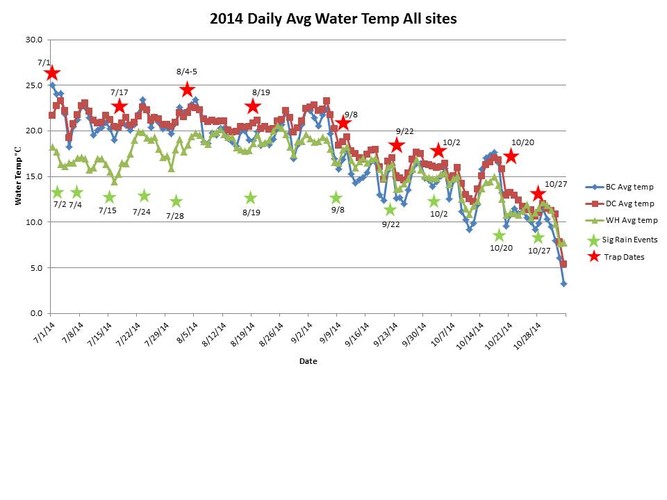The Wrack
The Wrack is the Wells Reserve blog, our collective logbook on the web.
The Wrack is the Wells Reserve blog, our collective logbook on the web.
Back in September we reported on a current research project going on at the reserve — green crab sampling! We now have an update on this project, but first to refresh your memory…

Over the 2014 field season, research staff and interns participated in a green crab abundance study in hopes of getting a better understanding of population dynamics of this invasive species on marshes along the coast of Maine. We used modified eels traps baited with Atlantic herring, deployed two traps at a time per site, left them for 24 hours, and repeated this process eight times between June and October.
In our last blog post we reported counting 5,000 green crabs. Well that number has increased just a bit… The final tally was an impressive (and worrisome) 12,524 crabs!
This data set is exciting because there is a lot of information being collected about these crabs besides just how many there are. All 12,524 crabs were weighed, their carapaces (or body) measured, and their sex determined. This information could be critical to understanding the population dynamics of this pesky invader.

A brief celebration was held for the 10,000th green crab. Party hats worn by all!
Out of the 12,524 crabs, 1,195 came from Broad Cove in Yarmouth, 5,086 from Day Cove in Damariscotta, and 6,243 from the Webhannet River in Wells. Here are a few interesting observations from the data we have analyzed thus far.
We’re currently looking at our water quality data from these sites in an effort to connect information on their environment, such as water temperature and salinity, with crab abundances. Although this data is still being analyzed we’re seeing some interesting differences between sites and certainly differences in water chemistry throughout the summer and into fall. Other environmental data, such as rainfall totals, is being investigated to link weather events to the water chemistry being monitored.
Since field season has finally come to an end, the research staff is looking forward to exploring the data set more. Documented weather events or water quality parameters such as temperature, salinity, and dissolved oxygen levels may help us better understand some of the trends we see in the demographic information on the green crab populations. We’re also investigating the crab’s impact on salt marsh erosion and stability using a variety of geological equipment and techniques, including stake arrays to measure lateral creek bank erosion, sediment elevation tables to track the elevation of the marsh, and shear strength torque meter to collect information on marsh stability.
Over the next couple of months we look forward to spending more time on the data as well as sharing our findings with the public and scientific community. In fact, research director Kristin Wilson presented "European green crabs in southern Maine marshes: trends in abundance and marsh impacts" at the Northeast Aquaculture Conference in Portland, Maine, and research associate Jeremy Miller presented our work to the Maine Marine Invasive Species Working Group in December 2014.

A graph showing the daily average water temperature throughout the 2014 field season at our three trapping sites, Broad Cove, Day Cove, and Webhannet River.
Thanks once again to The Maine Outdoor Heritage Fund, Maine Sea Grant, and Casco Bay Estuary Partnership for the financial support making our green crab work possible.